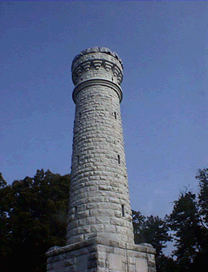Command
 Command
refers to the influence leaders have over the state of the forces
under their command. Good use of Command will result in units being
better able to move and fight, while Command failures will result in
reduced capabilities.
Command
refers to the influence leaders have over the state of the forces
under their command. Good use of Command will result in units being
better able to move and fight, while Command failures will result in
reduced capabilities.
Each Leader is assigned a default Command Rating ranging from A (best) to F (worst). This rating can be affected in a positive way by the Leader’s commander (if he has one) provided the Leader is not Detached. At the beginning of each player’s Turn, a Command Test is performed for all leaders currently on the map. The Command Test begins with the highest commanding leaders on the map and proceeds downward through the command hierarchy. Each Leader’s Command rating is translated into a number by converting A to 6, B to 5, and so on down to F to 1. This number if compared to a random die roll from 1 to 6. If the Leader’s number is greater than or equal to the die roll, the Leader has passed the Command Test for that turn. A Leader that has failed his Command Test will have his Command rating displayed in Yellow in the Hex Info Area (see the Main Program Help File ). A Leader which passes his Command Test will pass a +1 Command Bonus modifier down to the Command ratings of his subordinate commanders (except to Detached Leaders). If a Leader receives a Command Bonus from his superior and passes his Command Test, his Command rating will be recorded as the higher number for that turn. For example, a Division leader with a nominal Command rating of C which receives a +1 Command Bonus from his superior and passes his Command Test, will have a Command rating for that turn of B. In addition, a Leader which passes his Command Test will pass a Command Bonus down to his subordinates which is one more than the Command Bonus he received. A Leader which fails his Command Test passes no Command Bonus to his subordinates regardless of any Command Bonus he had received.
Here is an example. Suppose the command hierarchy at a battle consisted of
Army commander: Lt. Gen. Hood. Command Rating of C.
Corps commander: Lt. Gen. Cheatham. Command Rating of C.
Division commander: Maj. Gen. Cleburne. Command Rating of B.
Brigade commander: Brig. Gen. Govan. Command Rating of E.
The Command Test begins with Hood whose number for the Command Test is 4. Suppose that the die roll is 3 and thus Hood passes his Command Test this turn. Hood passes a Command Bonus of 1 to Cheatham which gives Cheatham a number of 5 for his Command Test. Suppose that the die roll is 4 and thus Cheatham passes his Command Test giving him a Command Rating of B for this turn. Cheatham passes a Command Bonus of 2 to Cleburne which gives Cleburne a number of 6 (the maximum) for this turn. Cleburne must therefore pass his Command Test this turn and thus passes a Command Bonus of 3 to Govan which gives Govan a number of 5 (2 + 3) for his Command Test. Suppose that the die roll is 6 and thus Govan fails his Command Test and keeps his nominal Command Rating of E for this turn.
Recovery From Disruption
After all Leaders have been through the Command Test, the Leaders are then used to determine if Disrupted units become un-Disrupted that turn. Each Disrupted unit is assigned a value to be used for the Test for Disruption Recovery as follows:
An artillery unit is given a value equal to its current Morale rating.
A Detached infantry or cavalry unit is given a value of 1.
A non-Detached infantry or cavalry unit whose Leader has passed his Command Test is given a value of 1 plus the current numerical Command Rating of his commander. If the Leader failed to pass his Command Test, then the unit is given a value of 1.
At night, the value given a unit is one less than normal.
For the disruption recovery test, if a random die roll is less than or equal to this assigned value, then the unit becomes un-Disrupted. Note that a Detached infantry or cavalry unit cannot recover from Disruption at night.
Night Turns
During Night turns, all Leaders and units have a Command value one less than normal. Thus, a Leader with a Command Rating of A would have a numerical rating of 5 during Night turns and a Detached unit would have a value of 0 in the Test for Disruption Recovery (and thus be unable to become un-Disrupted).
